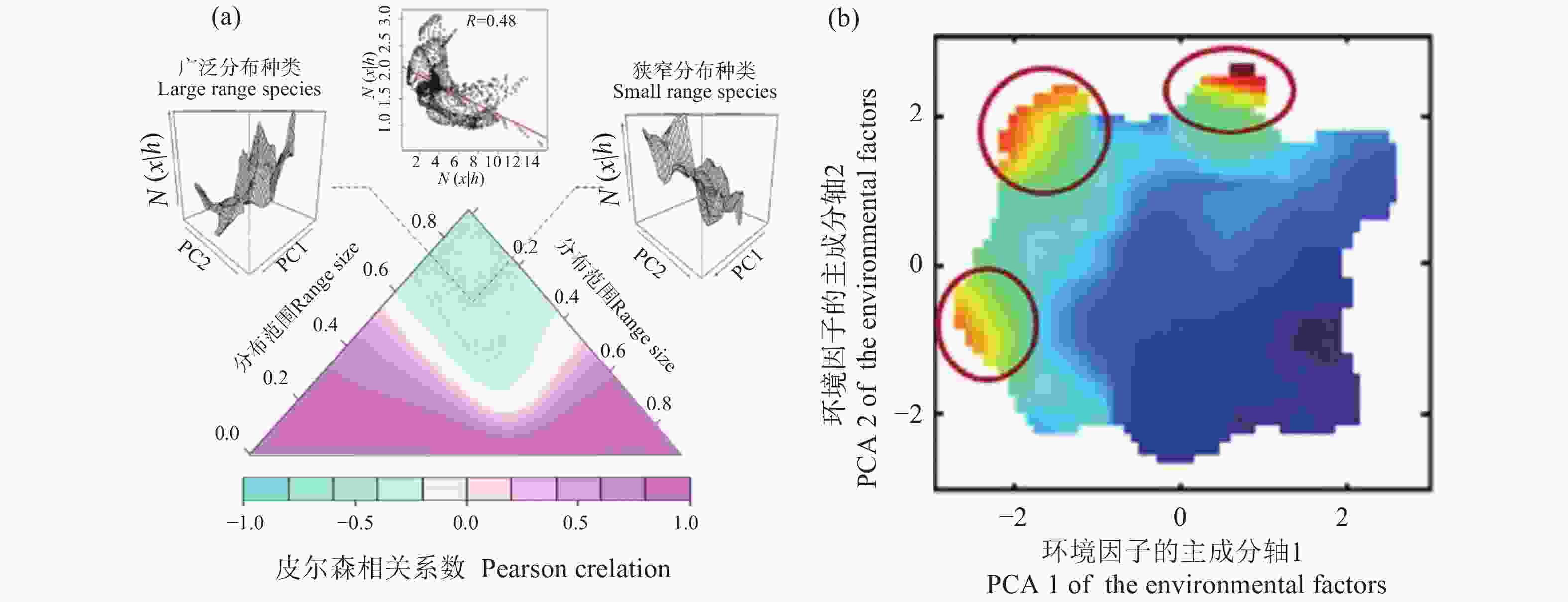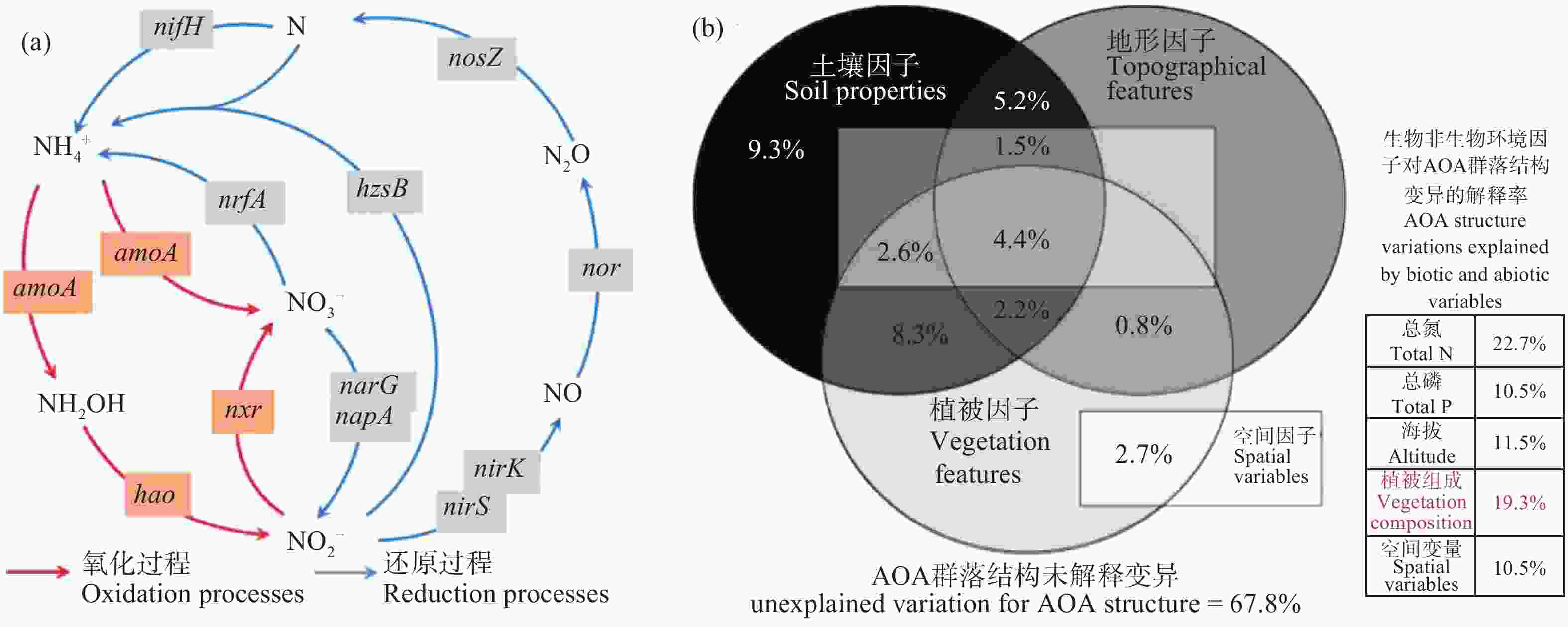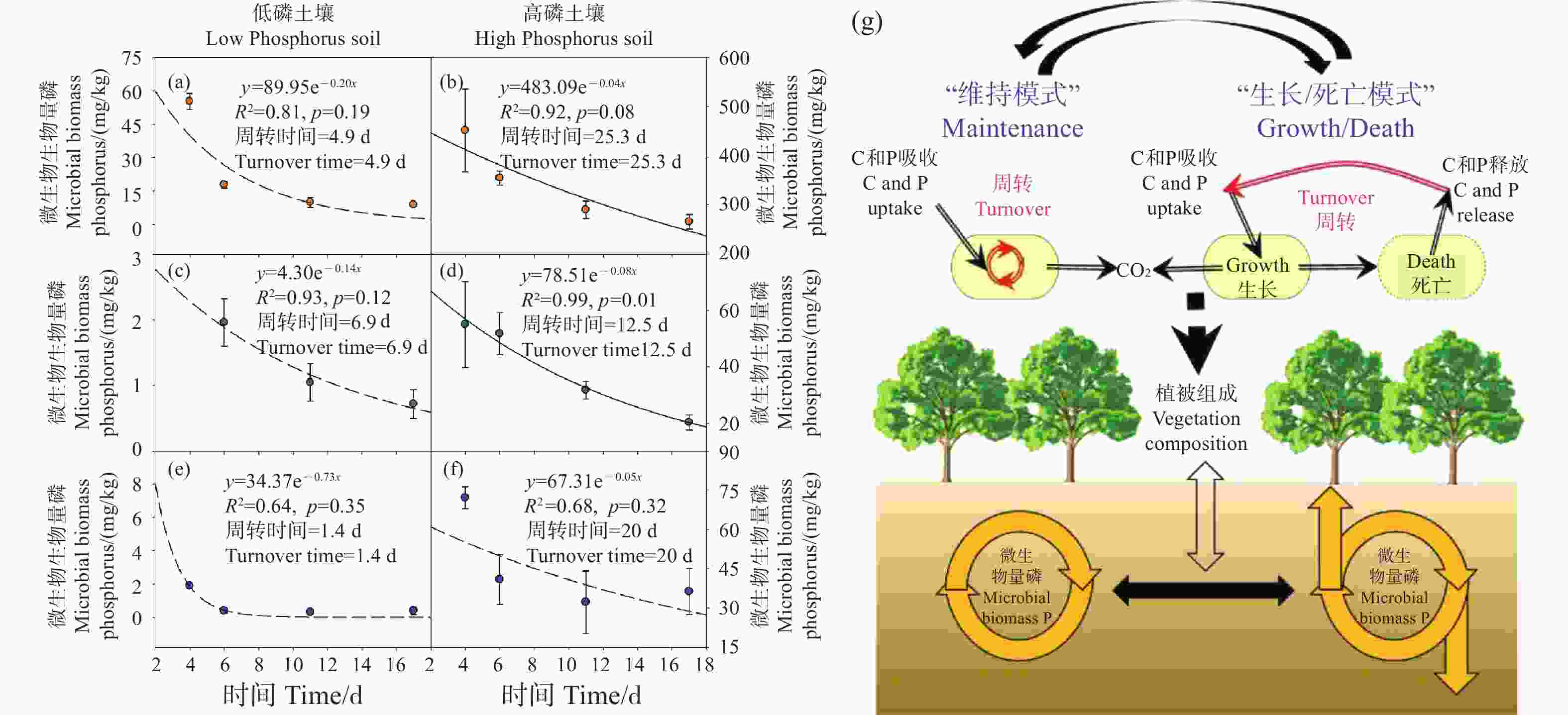Rare Species Regulation Mechanism of Natural Recovery and the Implications on Ecological Restoration in Tropical and Subtropical Forests
-
摘要: 稀有物种是热带亚热带森林生态系统中物种共存与维持生物多样性的重要类群,但对稀有物种在维持森林物种多样性的调控机制及其在生态修复中的作用研究较少。本研究在梳理和分析相关研究的基础上,结合海南尖峰岭国家级森林生态站的长期监测研究成果,提出了热带亚热带森林自然恢复的“稀有物种调控机制”基本理论框架,探讨其在我国热带亚热带森林生态修复中的应用原则。Abstract: Rare species is an important group that ensuring species co-existence and biodiversity maintenance in tropical and subtropical forest ecosystems. However, the roles of rare species in regulating biodiversity maintenance and their applications on ecological restoration have been rarely addressed. Based on a thorough literature review in combination with long-term monitoring and observation in Jianfengling National Key Field Research Station, it was proposed that a framework of “rare species regulation mechanism” of natural recovery in tropical and subtropical forests. Moreover, it was also discussed that the application principles of the proposed mechanism on ecological restoration of tropical and subtropical forests in China.
-
图 1 不同采伐干扰方式和恢复时间的物种多度分布曲线
Figure 1. Species abundance distribution curves among forests with different disturbance types and recovery times
注:本图是基于先前研究(Xu et al., 2015a)重新绘制。This figure was revised from Xu et al., 2015a.
图 2 物种间分布范围的关联矩阵 (a)森林群落中稀有物种和常见物种在生境利用上分离 ;(b)稀有物种在土壤有效磷高分布区域呈现的3个分布热点
Figure 2. Correlation matrix among species distributions along range sizes (a) Rare species and common species utilized different habitats; (b) Rare species showed three distribution hotspots along the soil with available phosphorus gradients
注:本图是基于先前研究(Xu et al., 2015b)重新绘制。This figure is revised from Xu et al., 2015b.
图 3 森林中稀有物种豆科树木的密度效应
Figure 3. The neighbor effects of seven leguminous species
注:本图是基于先前研究(Xu et al., 2019)重新绘制。This figure is revised from Xu et al., 2019.
图 4 AOA驱动的硝化作用和反硝化菌介导的硝态氮还原作用 (a)AOA和反硝化菌是影响森林土壤氮有效性的关键微生物类群;(b)土壤、植被、地形和空间因子对热带亚热带天然次生林土壤AOA群落结构变异的解释力度及差异
amoA, 氨单加氧酶的α亚基; hao, 羟胺氧化还原酶; narG, napA, 硝酸还原酶亚基; nrfA, nirK, nirS, 亚硝酸还原酶亚基; nor, 一氧化氮还原酶; nosZ, 氧化亚氮还原酶亚基; nifH, 固氮酶亚基; hzsB, 肼合成酶亚基。amoA, α-subunit of ammonia monooxygenase; hao, hydroxyamine oxidoreductase; narG, napA, subunits of nitrate reductase; nrfA, nirK, nirS, subunits of nitrite reductase; nor, nitric oxide reductase; nosZ, subunit of nitrous oxide reductase; nifH, subunit of nitrogenase; hzsB,subunit of hydrazine synthas.
Figure 4. The nitrification processes driving by AOA and denitrification processes driving by denitrifiers (a) AOA and denitrifiers are key microorganisms in affecting forest soil N availability; (b) The amount of AOA community structure variations in tropical and subtropical natural secondary forests were affected by soil, vegetation, topographical and spatial variables
注:本图是基于先前研究(Chen et al., 2015; 陈洁等,2020)重新绘制。This figure is revised from authors' published papers (Chen et al., 2015; 陈洁等,2020).
图 5 低磷和高磷土壤中微生物的生物量碳、氮、磷周转速率(a-f) ,以及土壤微生物的生物量磷循环“维持模式、生长/死亡模式”与植物生长的关系(g)
Figure 5. Turnover rates of soil microbial biomass C, N and P (a-f), and relationships of plant growth with microbial biomass P turnover in “Maintenance” and “Growth/Death” mode, respectively (g)
注:本图是基于先前研究(Chen et al., 2019c)重新绘制。This figure is revised from Chen et al., 2019c.
图 6 热带森林不同干扰强度和恢复阶段的土壤真菌网络结构及其参数 (a)原始林;(b)择伐后自然恢复形成的次生林; (c)皆伐后自然恢复形成的次生林
Figure 6. Soil fungal network structure and related perimeters in tropical forests (a) Primary forest; (b) naturally regenerated secondary forest after selective logging; (c) naturally regenerated secondary forest after clear cutting
注:本图是基于先前研究(Chen et al., 2019d)重新绘制。This figure is revised from Chen et al., 2019d.
-
[1] 鲍显诚, 1983. 《稀有物种保护的生物学问题》一书简介[J]. 生态学报, 3(4): 375-376. [2] 曹洪麟, 吴林芳, 王志高, 等, 2013. 鼎湖山南亚热带森林: 树种及其分布格局[M]. 北京: 中国林业出版社. [3] 陈洁, 骆土寿, 周璋, 等, 2020. 氮沉降对热带亚热带森林土壤氮循环微生物过程的影响研究进展[J]. 生态学报, 40(23): 8528-8538. [4] 陈斯, 2017. 山亚热带常绿落叶阔叶混交林群落结构与物种多样性[D]. 恩施: 湖北民族学院. [5] 国家林业和草原局, 2019. 中国森林资源报告(2014-2018)[M]. 北京: 中国林业出版社. 131-132. [6] 何春梅, 刘润清, 杨治春, 等, 2021. 秦岭皇冠暖温性落叶阔叶林物种组成与群落结构[J]. 生态学报, 32(8): 2737-2744. [7] 李意德, 许涵, 骆土寿, 等, 2012. 生态系统定位观测与研究数据集·森林生态系统卷: 海南尖峰岭站(生物物种数据集)[M]. 北京: 中国农业出版社. [8] 梁栋栋, 彭杰, 高改利, 等, 2020. 鹞落坪落叶阔叶林蔷薇科主要树种的空间分布格局及种间关联性[J]. 生物多样性. 28(8): 1008-1017. [9] 缪绅裕, 黄金玲, 刘闯, 2020. 广东南岭国家公园植物多样性及其保护价值[J]. 广东园林, 42(5): 8-11. [10] 盘李军, 何增丽, 冼伟光, 等, 2021. 云勇森林公园杉木生态公益林改造后群落物种组成[J]. 林业与环境科学, 37(3): 68-74. [11] 秦运芝, 张佳鑫, 刘检明, 等, 2018. 湖南八大公山25 ha常绿落叶阔叶混交林动态监测样地群落组成与空间结构[J]. 生物多样性, 6(9): 1016-1022. doi: 10.17520/biods.2018074 [12] 施国杉, 刘峰, 陈典, 等, 2021. 云南纳板河热带季节雨林20 ha动态监测样地的树种组成与群落分类[J]. 生物多样性. 29(1): 10-20. [13] 王甜, 2013. 海南野生植物保护法律制度研究[D]. 海口: 海南大学. [14] 王艳红, 李帅锋, 郎学东, 等, 2020. 地形异质性对云南普洱季风常绿阔叶林物种多样性的影响[J]. 植物生态学报, 44(10): 1015-1027. doi: 10.17521/cjpe.2020.0148 [15] 温韩东, 林露湘, 杨洁, 等, 2018. 云南哀牢山中山湿性常绿阔叶林20 hm2动态样地的物种组成与群落结构[J]. 植物生态学报, 42(4): 419-429. doi: 10.17521/cjpe.2017.0272 [16] 谢峰淋, 周全, 史航, 等, 2019. 秦岭落叶阔叶林25 ha森林动态监测样地物种组成与群落特征[J]. 生物多样性, 27(4): 439-448. doi: 10.17520/biods.2018326 [17] 许涵, 李意德, 林明献, 等, 2015a. 海南尖峰岭热带山地雨林60 ha动态监测样地群落结构特征[J]. 生物多样性, 23(2): 192-201. [18] 许涵, 李意德, 骆土寿, 等, 2015b. 海南尖峰岭热带山地雨林: 群落特征、树种及其分布格局[M]. 北京: 中国林业出版社, 41-42. [19] 杨淑华, 王台, 钱前, 等, 2016. 2015年中国植物科学若干领域重要研究进展[J]. 植物学报, 51: 416-472. doi: 10.11983/CBB16160 [20] 姚良锦, 姚兰, 易咏梅, 等, 2017. 湖北七姊妹山亚热带常绿落叶阔叶混交林的物种组成和群落结构[J]. 生物多样性, 25(3): 275-284. doi: 10.17520/biods.2016180 [21] 苑虎, 张殷波, 覃海, 等, 2009. 中国国家重点保护野生植物的就地保护现状[J]. 生物多样性, 17(3): 280-287. [22] António M, Luís C M, Francisco D, 2015. Lower within-community variance of negative density dependence increases forest diversity[J]. PLoS ONE, 10(5): e0127260. doi: 10.1371/journal.pone.0127260 [23] Benone N L, Soares B E, Lobato C M C, et al, (2020-09-17)[2021-08-09]. How modified landscapes filter rare species and modulate the regional pool of ecological traits?[J/OL]. Hydrobiologia. https://doi.org/10.1007/s10750-020-04405-9. [24] Betts J, Richard P Y, Craig H-T, et al, 2020. A framework for evaluating the impact of the IUCN Red List of threatened species[J]. Conservation Biology, 34(3): 632-643. doi: 10.1111/cobi.13454 [25] Bever J D, 1994. Feedback between plants and their soil communities in an old field community[J]. Ecology, 75: 1965-1977. doi: 10.2307/1941601 [26] Bousfield C G, Cerullo G R, Massam M R, et al, 2020. Chapter One - Protecting environmental and socio-economic values of selectively logged tropical forests in the Anthropocene[M]// Dumbrell A J, Turner E C, Fayle T M. Advances in Ecological Research. London: Academic Press, 62: 1-52. [27] Butler R, (2019-04-01)[2021-08-09]. Why are Rainforests so Diverse? [EB/OL]. https://rainforests.mongabay.com/03-diversity-of-rainforests.html. [28] Cao M, Zhu H, Wang H, et al, 2008. Xishuangbanna Tropical Seasonal Rainforest Dynamics Plot: Tree Distribution Maps, Diameter Tables and Species Documentation [M]. Kunming: Yunnan Science and Technology Press. [29] Chen J, Chazdon R L, Swenson N, et al, 2021b. Drivers of soil microbial community assembly during recovery from selective logging and clear cutting[J]. Journal of Applied Ecology, 58: 2231-2242. doi: 10.1111/1365-2664.13976 [30] Chen J, Feng K, Hannula S E, et al, 2021a. Interkingdom plant-microbial ecological networks under selective and clear cutting of tropical rainforest[J]. Forest Ecology and Management, 491: 119182. doi: 10.1016/j.foreco.2021.119182 [31] Chen J, Li J J, Shen W J, et al, 2019b. The structure and species co-occurrence networks of soil denitrifying bacterial communities differ between a coniferous and a broadleaved forests[J]. Microorganisms, 7(9): 361. doi: 10.3390/microorganisms7090361 [32] Chen J, Rui Y C, Zhou X, et al, 2016. Determinants of the biodiversity patterns of ammonia oxidizing archaea community in two contrasting forest stands[J]. Journal of Soils and Sediments, 16: 878-888. doi: 10.1007/s11368-015-1302-4 [33] Chen J, Seven Y, Zilla T, et al, 2019c. Microbial C: N: P stoichiometry and turnover depend on nutrients availability in soil: A 14C, 15N and 33P triple labelling study[J]. Soil Biology and Biochemistry, 131: 206-216. doi: 10.1016/j.soilbio.2019.01.017 [34] Chen J, Shen W J, Xu H, et al, 2019a. The composition of nitrogen-fixing microorganisms Correlates with Soil Nitrogen Content during Reforestation: A Comparison between Legume and Non-legume Plantations[J]. Frontiers in Microbiology, 10: 508. doi: 10.3389/fmicb.2019.00508 [35] Chen J, Xu H, He D, et al, 2019d. Historical logging alters soil fungal community composition and network in a tropical rainforest [J]. Forest Ecology and Management, 433: 228-239. [36] Chen J, Zhang H, Liu W, et al, 2015. Spatial distribution patterns of ammonia-oxidizing archaea abundance in subtropical forests at early and late successional stages[J]. Scientific Reports, 5(1): 16587. doi: 10.1038/srep16587 [37] Chen Y, Wu Y, Chen W, et al, 2020. Application of a Negative Multinomial Model Gives Insight into Rarity-Area Relationships[J]. Forests, 11(5): f11050571. [38] Cherniavskih V I, Pravdin V G, Kharlamova I A, et al, 2020. Prospects for the use of the microbiological preparations for the reproduction of rare species of tree-shrub vegetation of the south of the central Russian upland[J]. Plant Cell Biotechnology and Molecular Biology, 21(15/16): 142-149. [39] Chiarucci A, 2012. Estimating species richness: still a long way off![J]. Journal of Vegetation Science, 23(6): 1003-1005. [40] CITES (The Convention on International Trade in Endangered Species of Wild Fauna and Flora), (2020-05-28)[2021-08-09]. Checklist of CITES species[EB/OL]. http://checklist.cites.org/. [41] Cody M L, 1986. Structural niches in plant communities[M]//J. Diamond. Community Ecology. New York: Harper & Row Publishers, 381-405. [42] Connell J, 1971. On the role of natural enemies in preventing competitive exclusion in some marine animals and in rain forest trees[M]//Boer P J, Gradwell G R. Dynamics of Populations. Wageningen, The Netherlands: Centre for Agricultural Publishing and Documentation, 298-312. [43] Crawford K M, Bauer J T, Comita L S, et al, 2019. When and where plant-soil feedback may promote plant coexistence: a meta-analysis[J]. Ecology Letters, 22(8): 1274-1284. doi: 10.1111/ele.13278 [44] Dai Z, Liu G, Chen H, et al, 2019. Long-term nutrient inputs shift soil microbial functional profiles of phosphorus cycling in diverse agroecosystems[J]. The ISME Journal, 14: 757-770. [45] Deng Y, Jiang Y H, Yang Y, et al, 2012. Molecular ecological network analyses[J]. BMC Bioinformatics, 13(1): 113. doi: 10.1186/1471-2105-13-113 [46] Dimson M, Gillespie T W, 2020. Trends in active restoration of tropical dry forest: Methods, metrics, and outcomes[J]. Forest Ecology and Management, 467: 118150. doi: 10.1016/j.foreco.2020.118150 [47] Elizabeth K, Koen H, Marijn B, et al, 2019. Large-sized rare tree species contribute disproportionately to functional diversity in resource acquisition in African tropical forest[J]. Ecology and Evolution, 9(8): 4349-4361. doi: 10.1002/ece3.4836 [48] Enquist B J, Feng X, Boyle B, et al, 2019. The commonness of rarity: global and future distribution of rarity across land plants[J]. Science Advances, 5: eaaz0414. doi: 10.1126/sciadv.aaz0414 [49] Everton A M, 2021. An index for assessing the rare species of a community[J]. Ecological Indicators, 124: 107424. [50] Fernanda C S, Kyle D G, Oliver P L, et al, 2019. Evolutionary diversity is associated with wood productivity in Amazonian forests[J]. Nature Ecology & Evolution, 3(12): 1754-1761. [51] Gause G F, 1934. The Struggle for Existence[M]. Baltimore: Williams and Wilkins. [52] Ghazoul J, Chazdon R, 2017. Degradation and recovery in changing forest landscapes: a multiscale conceptual framework[J]. Annual Review of Environment and Resources, 42: 161-188. doi: 10.1146/annurev-environ-102016-060736 [53] Hubbell S P, Foster R B, 1986. Canopy gaps and the dynamics of a neotropical forest[M]//Crawley M J. Plant Ecology. Oxford, UK: Blackwell, 77-96. [54] IUCN (International Union for Conservation of Nature), 2017[2021-08-25]. IUCN Red List of Threatened Species[EB/OL]. http://www.iucnredlist.org/. [55] James E M W, Venter O, Lee J, et al, 2018. Protect the last of the wild[J]. Nature, 563(7729): 27-30. doi: 10.1038/d41586-018-07183-6 [56] Janzen D H, 1970. Herbivores and the number of tree species in tropical forests[J]. The American Naturalist, 104: 501-528. doi: 10.1086/282687 [57] Jones E L, Oburger E, 2011. Solubilization of Phosphorus by soil microorganisms[M]//Bunemann E K, Oberson A, Frossard E. Phosphorus in Action: Biological Processes in Soil Phosphorus Cycling. Berlin, Heidelberg: Springer, 169-198. [58] Kardol P, Bezemer T M, Putten V D, 2006. Temporal variation in plant-soil feedback controls succession[J]. Ecology Letters, 2006(9): 1080-1088. [59] Lapuente J, Ouattara A, Köster P C, et al, 2020. Status and distribution of Comoé Chimpanzees: combined use of transects and camera traps to quantify a low-density population in savanna-forest mosaic[J]. Primates, 61(5): 647-659. doi: 10.1007/s10329-020-00816-3 [60] Laughlin D C, Messier J, 2015. Fitness of multidimensional phenotypes in dynamic adaptive landscapes[J]. Trends in Ecology & Evolution, 30: 487-496. [61] Laughlin D C, Strahan R T, Adler P B, et al, 2018. Survival rates indicate that correlations between community-weighted mean traits and environments can be unreliable estimates of the adaptive value of traits[J]. Ecology Letters, 21(3): 411-421. doi: 10.1111/ele.12914 [62] Laura S K, Raimondo C, Alfredo T-N, 2021. Restoring commercial timber species through silvicultural patch clear-cuts and natural regeneration in Mexico’s Maya Forest: Composition and growth 11 years after three treatments[J]. Forest Ecology and Management, 493: 119206. doi: 10.1016/j.foreco.2021.119206 [63] Leitão R P, Zuanon J, Villéger S, et al, 2016. Rare species contribute disproportionately to the functional structure of species assemblages[J]. Proceedings of the Royal Society B: Biological Sciences, 283: 20160084. doi: 10.1098/rspb.2016.0084 [64] Levy-Booth D J, Prescott C E, Grayston S J, 2014. Microbial functional genes involved in nitrogen fixation, nitrification and denitrification in forest ecosystems[J]. Soil Biology & Biochemistry, 75: 11-25. [65] Logue J B, Mouquet N, Peter H, et al, 2011. Empirical approaches to metacommunities: a review and comparison with theory[J]. Trends in Ecology & Evolution, 26: 482-491. [66] Louche J, Ali M A, Cloutier-Hurteau B, et al, 2010. Efficiency of acid phosphatases secreted from the ectomycorrhizal fungus Hebeloma cylindrosporum to hydrolyse organic phosphorus in podzols[J]. FEMS Microbiology Ecology, 73: 323-335. [67] Lyons K G, Schwartz M W, 2001. Rare species loss alters ecosystem function-invasion resistance[J]. Ecology Letters, 4(4): 358-365. [68] Lu M, He F, 2017. Estimating regional species richness: The case of China's vascular plant species[J]. Global Ecology and Biogeography. 26: 835- 845. [69] Maron J L, Smith A L, Ortega Y K, et al, 2016. Negative plant‐soil feedbacks increase with plant abundance, and are unchanged by competition[J]. Ecology, 97(8): 2055-2063. doi: 10.1002/ecy.1431 [70] McGill B J, Etienne R S, Gray J S, et al, 2007. Species abundance distributions: moving beyond single prediction theories to integration within an ecological framework[J]. Ecology Letters, 10: 995-1015. doi: 10.1111/j.1461-0248.2007.01094.x [71] Miao N, Xu H, Moermond T, et al, 2018. Density-dependent and distance-dependent effects in a 60-ha tropical mountain rain forest in the Jianfengling mountains, Hainan Island, China: Spatial pattern analysis[J]. Forest Ecology and Management, 429: 226-232. [72] Mouillot D, Bellwood D R, Baraloto C, et al, 2013. Rare species support vulnerable functions in high-diversity ecosystems[J]. PLoS Biology, 11(5): e1001569. doi: 10.1371/journal.pbio.1001569 [73] Ngo T L, Hölscher D, 2014. The Fate of Five Rare Tree Species after Logging in a Tropical Limestone Forest (Xuan Son National Park, northern Vietnam)[J]. Tropical Conservation Science, 7(2): 326-341. doi: 10.1177/194008291400700211 [74] Pastore G, Kernchen S, Spohn M, 2020. Microbial solubilization of silicon and phosphorus from bedrock in relation to abundance of phosphorus-solubilizing bacteria in temperate forest soils[J]. Soil Biology and Biochemistry, 151: 108050. doi: 10.1016/j.soilbio.2020.108050 [75] Preston F W, 1948. The commonness, and rarity, of species[J]. Ecology, 29: 254-283. doi: 10.2307/1930989 [76] Preston F W, 1962. The canonical distribution of commonness and rarity: Part I[J]. Ecology, 43: 185. doi: 10.2307/1931976 [77] Putten V W H, Dijk V C, Troelstra S R, 1988. Biotic soil factors affecting the growth and development of Ammophila arenaria[J]. Oecologia, 76: 313-320. doi: 10.1007/BF00379970 [78] Rabinowitz D. 1981. Seven forms of rarity. The Biological Aspects of Rare Plants Conservation, 205-217. [79] Sarah M-N, Inés I, 2012. Tree range expansion may be enhanced by escape from negative plant-soil feedbacks[J]. Ecology, 93(12): 2637-2649. doi: 10.1890/11-2281.1 [80] Schroeder J W, Martin J T, Angulo D F, et al, 2018. Community composition and diversity of Neotropical root-associated fungi in common and rare trees[J]. Biotropica, 50(4): 694-703. doi: 10.1111/btp.12553 [81] Shipley B, 2007. Comparative plant ecology as a tool for integrating across scales[J]. Annals of Botany, 99: 965-966. doi: 10.1093/aob/mcm039 [82] Stoel V D C D, Putten V W H, Duyts H, 2002. Development of a negative plant–soil feedback in the expansion zone of the clonal grass Ammophila arenaria following root formation and nematode colonization[J]. Journal of Ecology, 90(6): 978-988. doi: 10.1046/j.1365-2745.2002.00727.x [83] Stump S M, Comita L S, 2018. Interspecific variation in conspecific negative density dependence can make species less likely to coexist[J]. Ecology Letters, 21(10): 1541-1551. doi: 10.1111/ele.13135 [84] Terborgh J, 2012. Enemies maintain hyperdiverse tropical forests[J]. The American Naturalist, 179(3): 303-314. [85] Tilman D, 1982. Resource Competition and Community Structure[M]. Princeton: Princeton University Press. [86] Vitousek P M, Porder S, Houlton B Z, et al, 2010. Terrestrial phosphorus limitation: mechanisms, implications, and nitrogen-phosphorus interactions[J]. Ecological Applications, 20: 5-15. doi: 10.1890/08-0127.1 [87] Walker J K M, Cohen H, Higgins L M, et al, 2014. Testing the link between community structure and function for ectomycorrhizal fungi involved in a global tripartite symbiosis[J]. New phytologist, 202: 287-296. doi: 10.1111/nph.12638 [88] Wilson E O, 1992. The Diversity of Life[M]. Cambridge, Mass: Belknap Press. [89] Xu H, Liu S R, Li Y D, et al, 2012. Assessing non-parametric and area-based methods for estimating regional species richness[J]. Journal of Vegetation Science, 23(6): 1006-1012. doi: 10.1111/j.1654-1103.2012.01423.x [90] Xu H, Li Y D, Liu S R, et al, 2015a. Partial recovery of a tropical rain forest a half century after clear-cut and selective logging[J]. Journal of Applied Ecology, 52(4): 1044-1052. doi: 10.1111/1365-2664.12448 [91] Xu H, Detto M, Fang S Q, et al, 2015b. Habitat hotspots of common and rare tropical species along climatic and edaphic gradients[J]. Journal of Ecology, 103(5): 1325-1333. doi: 10.1111/1365-2745.12442 [92] Xu H, Detto M, Li Y P, et al, 2019. Do N-fixing legumes promote neighbor diversity in the tropics[J]. Journal of Ecology, 107(1): 229-239. doi: 10.1111/1365-2745.13017 [93] Xu H, Matteo D, Fang S Q, et al, 2020. Soil nitrogen concentration mediates the relationship between leguminous trees and neighbor diversity in tropical forests[J]. Communications Biology, 3: 317. doi: 10.1038/s42003-020-1041-y [94] Yao J, Huang J, Ding Y, et al, 2021. Ecological uniqueness of species assemblages and their determinants in forest communities[J]. Diversity and Distributions, 27: 454-462. doi: 10.1111/ddi.13205 [95] Zhang L M, Hu H W, Shen J P, et al, 2011. Ammonia-oxidizing archaea have more important role than ammonia-oxidizing bacteria in ammonia oxidation of strongly acidic soils[J]. The ISME Journal, 6(5): 1032-1045. -





 下载:
下载:








